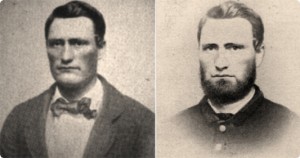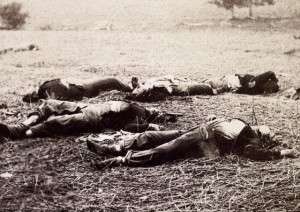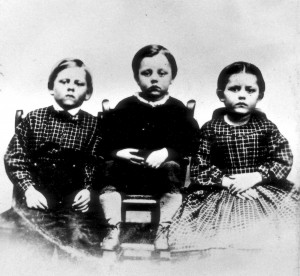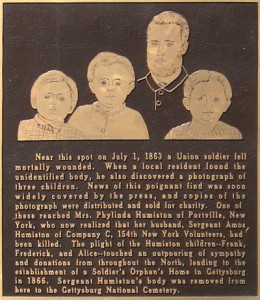Standing on the ground at the battlefields of Gettysburg is both a breathtaking, yet unsatisfying experience. Realizing that your feet are touching the same ground as men who died for a heroic cause brings humility, perspective, and a strong connection with history that cannot be experienced in an ordinary classroom. However, there remains a sense of disconnect from the souls of people, which site-seeing itself cannot satisfy. This missing connection, perhaps, is one that can only be attained through the careful teaching of stories that invoke that which will unite humanity for all time: emotion. When placed in its proper context, emotional stories not only bridge the gap between past and present, but also provide a better understanding for the events themselves. With the powerful combination of primary sources and modern technology, teachers are able to use these types of stories today more effectively than ever before from their own classrooms.
As a summer intern for Professor Pinsker at Dickinson College, I had the privilege to travel with him to Gettysburg as he led a group of high school teachers from Oklahoma on a tour of the battlegrounds. Before the trip, he asked me to be thinking about a story that I believe is especially impactful, and how I would use it to teach high school students about history and the Civil War. After some of the more well-known sites, we eventually stopped at a fire station on Stratton Street. It was here that I first heard the story of Amos Humiston, a soldier who died on that very ground almost 150 years ago, with a photo of his three children clutched in his hand. Humiston’s emotional story immediately interested me, and after talking with several of the high school teachers there about the needs and struggles of their students to understand history, I realized that Amos Humiston could potentially fill the gap. A little known story from the Battle of Gettysburg, his is one that nonetheless can be used to capture both the context of the times and heart of a soldier, while also providing opportunites for students to take a historians approach to the past.
Providing Context
To gain initial background and perspective, students should become familiar with a textbook explanation of the Battle of Gettysburg. To add interest and depth, media sites such as Google Earth show fantastic views of the landscape, and maps or pictures from sites like House Divided show the military strategy and devastation of the battle.
Once students have grasped an overall understanding of the Gettysburg Campaign, provide the students with a copy of an article from the October 19, 1863 Philadelphia Inquirer titled “Whose Father Was He?” Have the students analyze the document, and write down what they think it tells them about the war, family, and religion at the time.

An article printed in the Philadelphia Inquirer on October 19,
For more background and better analysis, the students could also read several paragraphs on pages 6 & 7 from Drew Gilpin Faust’s book titled The Republic of Suffering. In it, she explains the meaning and importance of “The Good Death” during the Civil War, describing how soldiers sought to be at peace with God and die honorably.
Relating to the Past
Once the students complete this task, go on to identify the unknown soldier from the Philadelphia Inquirer as Amos Humiston, and explain his story. A detailed version of the story can by found in a five-part blog post by Errol Morris for the New York Times titled “Whose Father Was He.” In addition, a shortened handout version along with a brief video can be found on the Day 1 Gettysburg Virtual Tour for the House Divided website. Use photos of he and his children as visual aids, and provide the students with examples of his letters and poems. In addition, students could even write thier own poem or letter to thier family as if they were a soldier at the time. These devices and techniques are very helpful in getting students to empathize with people from the past, and provide a strong connection to their emotions.
Writing Like Historians
After the students have gained an understanding of the context in which Amos Humiston lived and have identified with him emotionally, they must then begin to write as historians. Have them use everything they have learned thus far about Humiston from primary and secondary sources, and instruct them to write a brief memorial about him for the Gettysburg Battlefield. While brief, it will allow them to think critically about how to approach the past, and provide them with writing techniques that will be beneficial in future research papers. To conclude, a picture of the actual Gettysburg monument to Amos Humiston can be shown and read in class.
While there is no real substitute for a field trip to Gettysburg, modern technology has provided an opportunity for individuals to engage the past in significant ways. The high availability of primary and secondary sources over the internet allow teachers to present history to their students both accurately and creatively. Captivating stories such as Amos Humiston allow for the perfect combination of these sources and show students (if only a glimpse) of how real historians operate.
For even further reading on Amos Humiston, see:
Mark H. Dunkelman, Gettysburg’s Unknown Soldier: The Life, Death and Celebrity of Amos Humiston (Westport, CT: Praeger, 1999)












Related Articles
No user responded in this post
Leave A Reply
Please Note: Comment moderation maybe active so there is no need to resubmit your comments